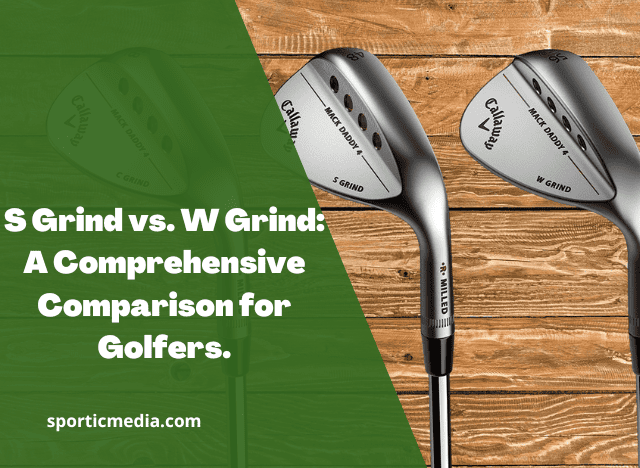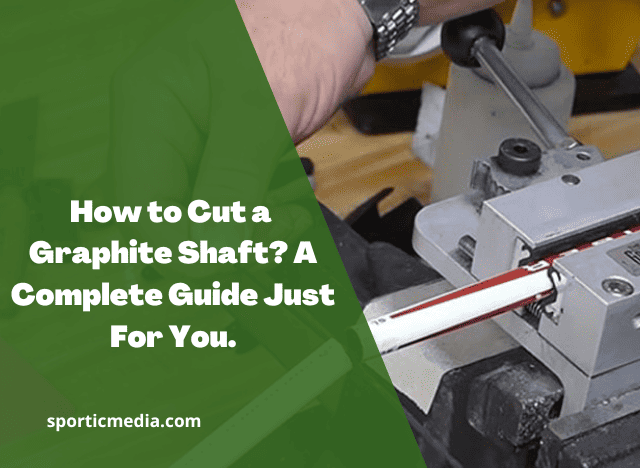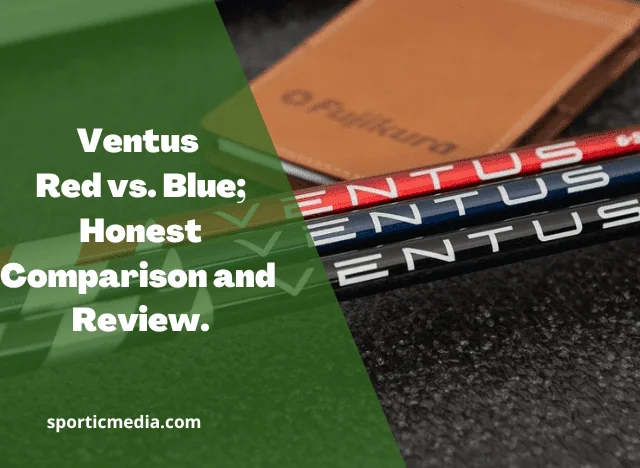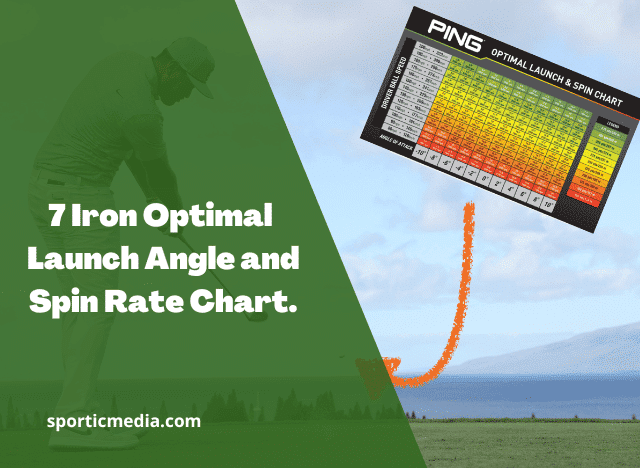When it comes to golf, every shot counts, and having the right equipment can make a significant difference in your performance. One crucial aspect of golf club selection is wedge grinds. Wedge grinds play a vital role in determining how your wedges interact with the turf and sand, ultimately affecting your shot outcome.
In this article, we will dive into the comparison between two popular wedge grinds: the S Grind and the W Grind. We’ll explore their characteristics, strengths, weaknesses, and help you make an informed decision to enhance your golf game.
Table of Contents
Understanding Wedge Grinds
Before we delve into the specifics of the S Grind and W Grind, let’s first understand what wedge grinds are and why they matter. Wedge grinds refer to the shaping of the sole and bounce of a wedge.
The sole’s shape, width, and camber influence how the club interacts with different turf conditions, such as tight lies, fluffy rough, or soft bunkers. By choosing the right grind, you can optimize your wedges for various shots around the green.
What to know about the S Grind?
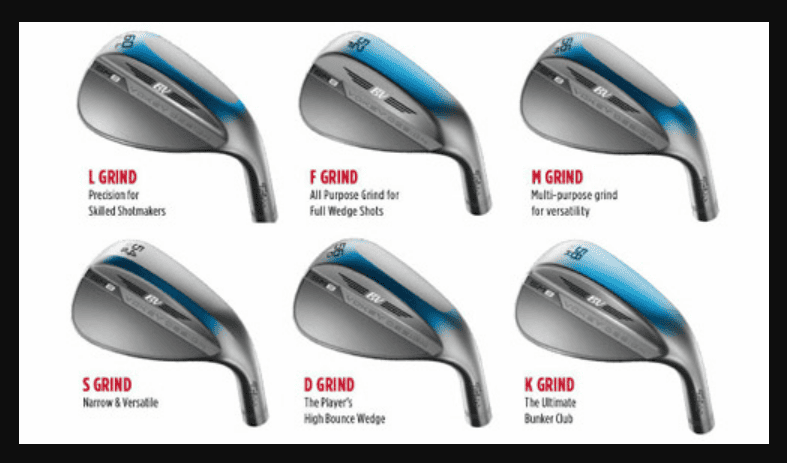
The S Grind is popular among golfers due to its versatility and playability. It features a medium-width sole with moderate bounce, allowing it to perform well in different turf conditions. The S Grind’s camber and trailing edge relief enable smooth interaction with the turf.
One of the strengths of the S Grind lies in its ability to handle a variety of lies. It excels on normal to slightly firm turf, making it a reliable option on most golf courses.
The S Grind also offers excellent shot versatility. When you need to play a flop shot or escape from a bunker, the S Grind allows you to open the clubface without sacrificing performance.
However, it’s important to consider the limitations of the S Grind. The moderate bounce and sole width may pose some challenges on extremely firm or tight lies, potentially leading to thin or heavy shots. Additionally, in heavy rough or deep bunkers, the S Grind may struggle to glide through the turf effectively, potentially resulting in inconsistent shots.
Lucky Wedges Review; Must Read
sportic media
What to know about the W Grind?
The W Grind is another popular choice, known for its wide sole and increased bounce. This grind excels in soft or fluffy turf conditions, providing additional forgiveness and preventing the club from digging too deep into the ground. The W Grind’s enhanced trailing edge relief and camber promote clean contact and consistent performance.
One of the main advantages of the W Grind is its ability to handle soft conditions. When faced with fluffy rough or soft bunkers, the wide sole and increased bounce prevent the wedge from getting stuck and help maintain better control and consistency. The W Grind is also forgiving on shots with higher bounce, ensuring a more forgiving strike.
However, it’s important to note that the W Grind may not be as suitable for tight or firm lies. The wide sole can create challenges in getting clean contact with the ball, potentially resulting in fat shots. Opening the clubface for delicate shots may require some adjustments, as the wide sole may affect shot trajectory.
Choosing the Right Grind for Your Game
Selecting the right grind for your game depends on personal preference, playing style, and the conditions you frequently encounter on the golf course. Experimenting with different wedge grinds and seeking professional guidance to find the optimal fit for your game is essential.
The S Grind might be the better option if you often play on various turf conditions due to its versatility. On the other hand, if you frequently encounter soft or fluffy turf, the W Grind’s wide sole and increased bounce can provide the necessary performance edge.
S Grind vs W Grind vs C Grind wedges
Here’s a more detailed comparison table for the S Grind, W Grind, and C Grind wedges:
| Grind | Sole Width | Bounce | Camber and Trailing Edge Relief | Best Suited For | Strengths | Weaknesses |
|---|---|---|---|---|---|---|
| S Grind | Medium | Moderate | Smooth interaction with the turf | Various turf conditions, playability, and versatility | Versatile in different lies, ability to open the clubface for flop shots and bunker play, performs well on firm lies | May pose challenges on extremely firm or tight lies, potential difficulties in heavy rough or deep bunkers |
| W Grind | Wide | High | Enhanced trailing edge relief | Soft or fluffy turf conditions, shots with higher bounce | Forgiving on soft conditions, prevents digging, maintains control, performs well on shots with higher bounce | May not be as suitable for tight or firm lies, potential challenges when opening the clubface for delicate shots |
| C Grind | Narrow | Low | Enhanced workability and control | Skilled players who manipulate the clubface | Versatility in shot-making, allows for precise shot shaping, narrow sole for enhanced workability and control | Limited forgiveness, may require advanced skills to fully utilize the grind’s capabilities, less suitable for softer turf conditions |
S Grind
The S Grind features a medium-width sole and moderate bounce. It is a versatile grind that performs well in various turf conditions. It offers playability, the ability to open the clubface, and excels on firm lies.
W Grind
The W Grind is characterized by a wide sole and high bounce. It is ideal for soft or fluffy turf conditions, providing forgiveness and preventing the club from digging too deep. It maintains control on shots with higher bounce.
C Grind
The C Grind is designed for skilled players who prefer to manipulate the clubface. It features a narrow sole and low bounce, allowing for versatility in shot-making. The C Grind offers enhanced workability and control, catering to players who want to shape their shots precisely.
These three grinds provide golfers with options that suit different playing styles, course conditions, and shot preferences. Understanding their characteristics can help golfers make informed decisions when selecting wedges for their game.
Please note that the table provides a comprehensive overview of the S Grind, W Grind, and C Grind wedges, highlighting their key characteristics, strengths, and weaknesses. Golfers should consider their playing style, skill level, and course conditions to determine the most suitable grind for their game.
How Much Wind Is Too Much For Golf?
sportic media
Conclusion
Understanding the differences between the S Grind and W Grind is crucial for any golfer optimising their wedge game. The S Grind offers versatility and playability on different lies, while the W Grind excels in soft conditions and shots with higher bounce. By considering your playing style and the conditions you face most frequently, you can make an informed decision and select the grind that best suits your game.
Remember, wedge grinds can significantly impact your performance around the greens. So, don’t hesitate to experiment, seek professional advice, and fine-tune your wedge selection to enhance your golf game and enjoy more successful shots on the course.
Some related FAQs
What is the purpose of wedge grinds in golf?
Wedge grinds shape the sole and bounce of a wedge to optimize its performance on different turf conditions. They influence how the club interacts with the ground, affecting shot outcome and playability.
How do I choose the right wedge grind for my game?
Choosing the right wedge grind depends on factors such as personal preference, playing style, and the conditions you frequently encounter. Experimenting with different grinds, seeking professional guidance, and considering your typical playing conditions will help you find the optimal fit.
Can I use different wedge grinds within my set?
Absolutely! It is common for golfers to have different wedge grinds within their set. For example, you might prefer an S Grind for your sand wedge and a W Grind for your lob wedge. This allows you to have more versatility and adaptability for different shots.
Are wedge grinds only relevant for advanced golfers?
Wedge grinds are beneficial for golfers of all skill levels. While advanced players may take advantage of the nuances and workability of different grinds, even beginners can benefit from understanding the basics and selecting a grind that suits their game and playing conditions.
Can I change wedge grinds on my existing wedges?
Generally, wedge grinds are pre-determined and cannot be easily changed on existing wedges. However, if you consult with a professional club fitter, they may be able to make certain modifications or recommend wedge options with different grinds that better suit your needs.
Discover the meticulous and expert-driven process behind our product reviews at Sportic Media. Our comprehensive guide, led by industry veterans, ensures you get the most reliable and detailed insights into golf equipment. Dive into our methodical approach by visiting How We Test Products at Sportic Media: A Comprehensive Guide
.

